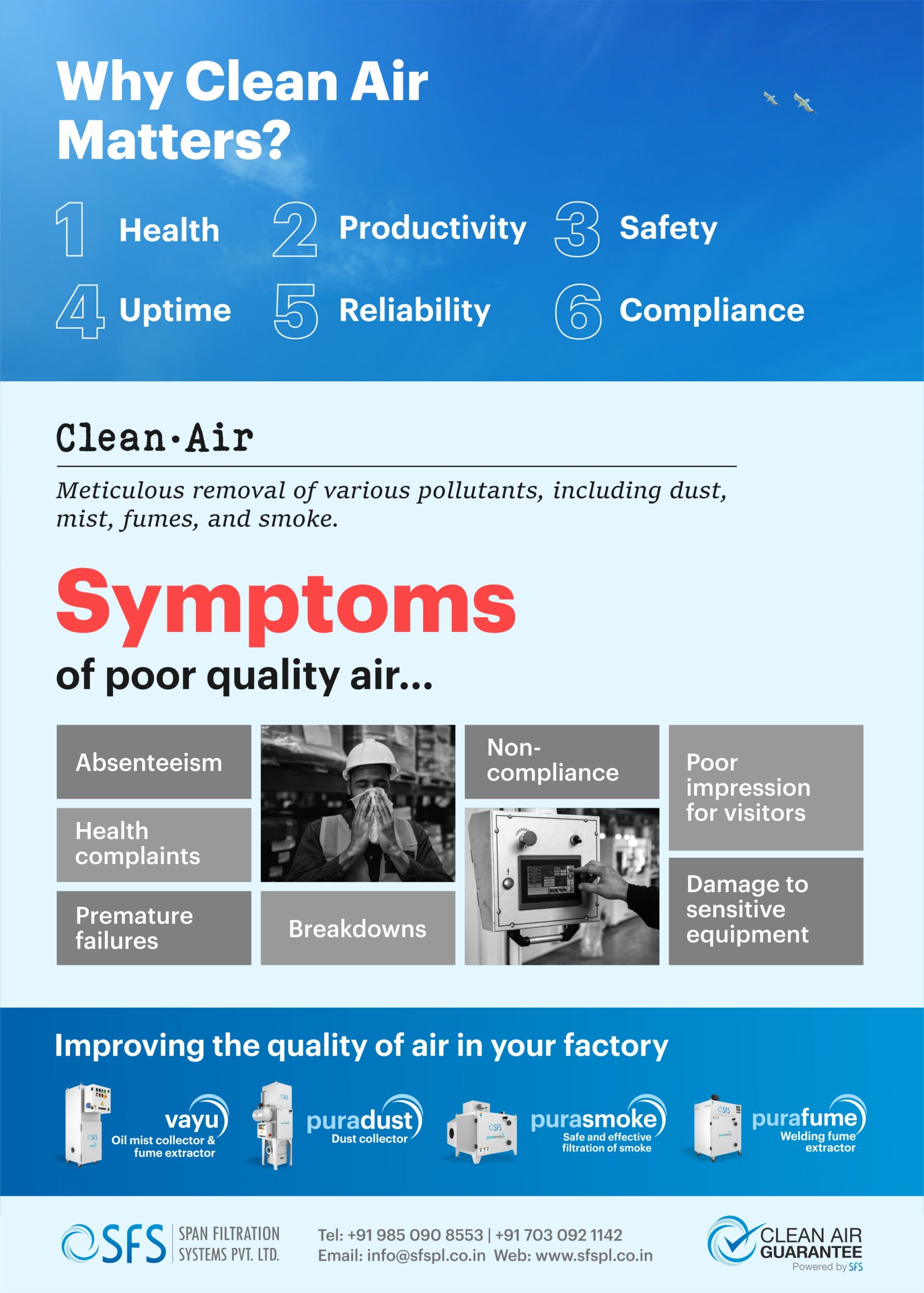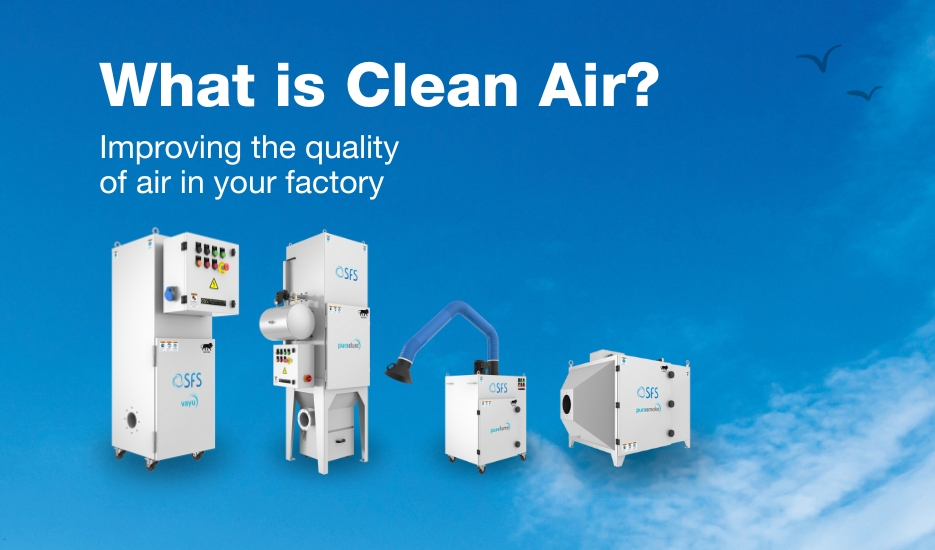Breathing Easy in Manufacturing: Navigating the Depths of Clean Air
The importance of clean air in manufacturing is the cornerstone for both human health and the efficiency of industrial assets. Let’s delve deeper into the nuances of clean air, specifically within the context of manufacturing, where dust, mist, fumes, and smoke filtration play a pivotal role in creating a truly healthy and productive workspace.
Why Clean Air in Your Factory Matters?
Clean air in manufacturing is more than just the absence of visible particles; it’s a meticulous process achieved through effective filtration. The quality of air directly impacts the well-being of your workforce by reducing the risk of respiratory issues, promoting a comfortable work environment, and enhancing overall job satisfaction. Moreover, it safeguards the performance and lifespan of your industrial equipment, mitigating the potential adverse effects of airborne contaminants.

What is Clean Air in Manufacturing?
In the manufacturing context, clean air involves the meticulous removal of various pollutants, including dust, mist, fumes, and smoke. It’s an environment where the concentration of these contaminants is minimized, creating a workspace that not only complies with safety standards but also fosters optimal operational conditions.
Symptoms of Poor Air Quality in Your Factory
Identifying poor air quality in manufacturing involves recognizing the specific symptoms associated with different pollutants. Persistent coughing may indicate exposure to airborne dust, while eye irritation could be a result of mist or smoke. Fatigue and headaches can be linked to poor ventilation and fume extraction.
Effects of Poor Air Quality on Your Assets
The impact of poor air quality extends beyond human health to the very core of your manufacturing assets. Dust, mist, fumes, and smoke can accumulate on machinery, leading to increased maintenance costs, reduced operational efficiency, and a higher likelihood of unexpected breakdowns. Clean air, achieved through robust filtration systems, acts as a shield against these detrimental effects.
Why is Monitoring PM Levels Essential for Assessing Clean Air Quality in Manufacturing?
Monitoring Particulate Matter (PM) levels is crucial for gauging clean air quality in manufacturing. PM, especially the ultrafine PM1 particles with a diameter of 1 micron or less, plays a significant role in both human health and industrial asset maintenance. These microscopic particles, often generated in manufacturing processes, can impact respiratory health and accumulate on machinery. By measuring PM levels, we gain insights into the effectiveness of our filtration systems, ensuring that the air quality remains optimal. It’s not just a numerical value; it’s a direct indicator of the health of the air in the manufacturing environment, vital for both the well-being of the workforce and the longevity of valuable assets.
Understanding PM1 and Filtration Challenges
Particulate Matter 1 (PM1) represents particles with a diameter of 1 micron or less. These ultrafine particles pose a unique challenge as they are small enough to bypass standard filtration systems. In manufacturing, where various processes generate fine particulates, including welding fumes and microscopic dust, effective filtration becomes imperative. Choosing advanced filtration solutions capable of capturing PM1 and smaller sized particles ensures a comprehensive approach to clean air.
How to Improve Air Quality in Your Facility: A Filtration Focus
Improving air quality in manufacturing involves a meticulous approach to filtration. Investing in high-efficiency air filtration systems tailored to the specific contaminants generated in your processes is paramount. Consider advanced technologies such as Dust Collectors, Mist Collectors, Electrostatic Precipitators, Fume Extractors for comprehensive coverage. Regular maintenance and monitoring ensure that these systems continue to operate at peak efficiency.

